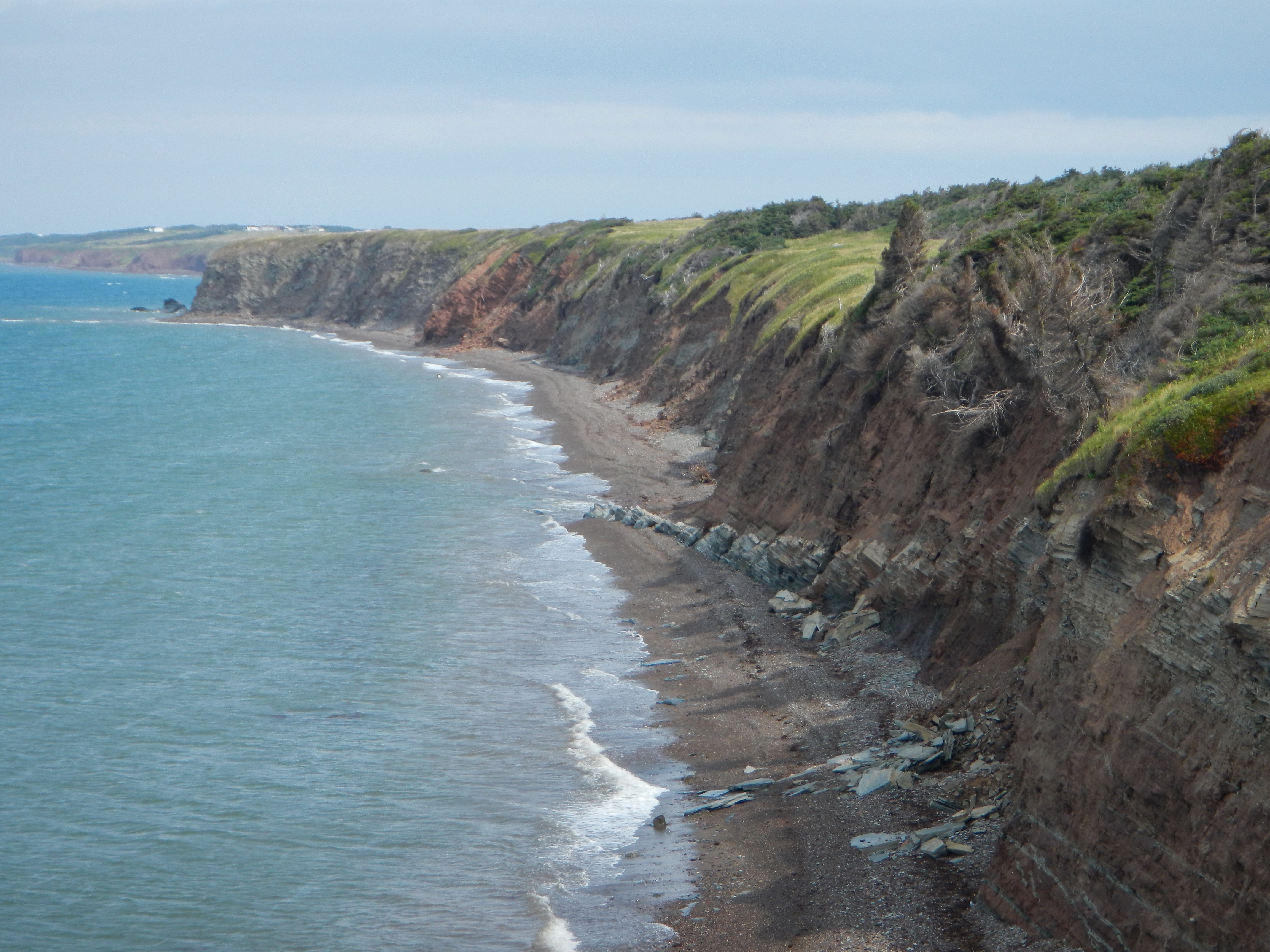
Paleontology, Clam Bank Formation
Revision of the paleontology of the Clam Bank Formation has been undertaken over the last couple of years speared on by recovery of new material (cystoids, brachiopods) that demonstrated an Early Devonian age. Since 1970, the formation has been linked to the late Silurian. Although Burden et al. (2002) recovered palynomorphs relating to a biozone that had been considered to be Early Devonian in age, the biozone has been extended down into the late Silurian since their work. Thus, none of the previous age estimates based on fossils have been secure biostratigraphically due to changing biostratigraphic parameters.
Formal taxonomic description must await others' expertise but my work has created a revised and much extended fossil list that supports an Early Devonian assemblage in combination with first appearance datums of palynomorph species (Edwards et al. 2014) recovered by Burden et al. (2002). This has significant impact on latest Silurian and Early Devonian paleogeography and palaeoceanography within the Canadian Appalachian orogen. Furthermore, the fauna demonstrate Silurian holdovers and an assemblage with Old World fauna quite distinct from the Eastern Americas realm that extended across the rest of the eastern North American region at the time.
The work is now summarized in the following publication:
Dix, G.R. (in press) An Early Devonian fossil assemblage in the Clam Bank Formation (western Newfoundland): implications for Lochkovian paleogeography, paleoceanography, and biogeography in the Canadian Appalachian orogen. Canadian Journal of Earth Sciences.
The following highlights some of the paleontological discoveries:
Cystoids
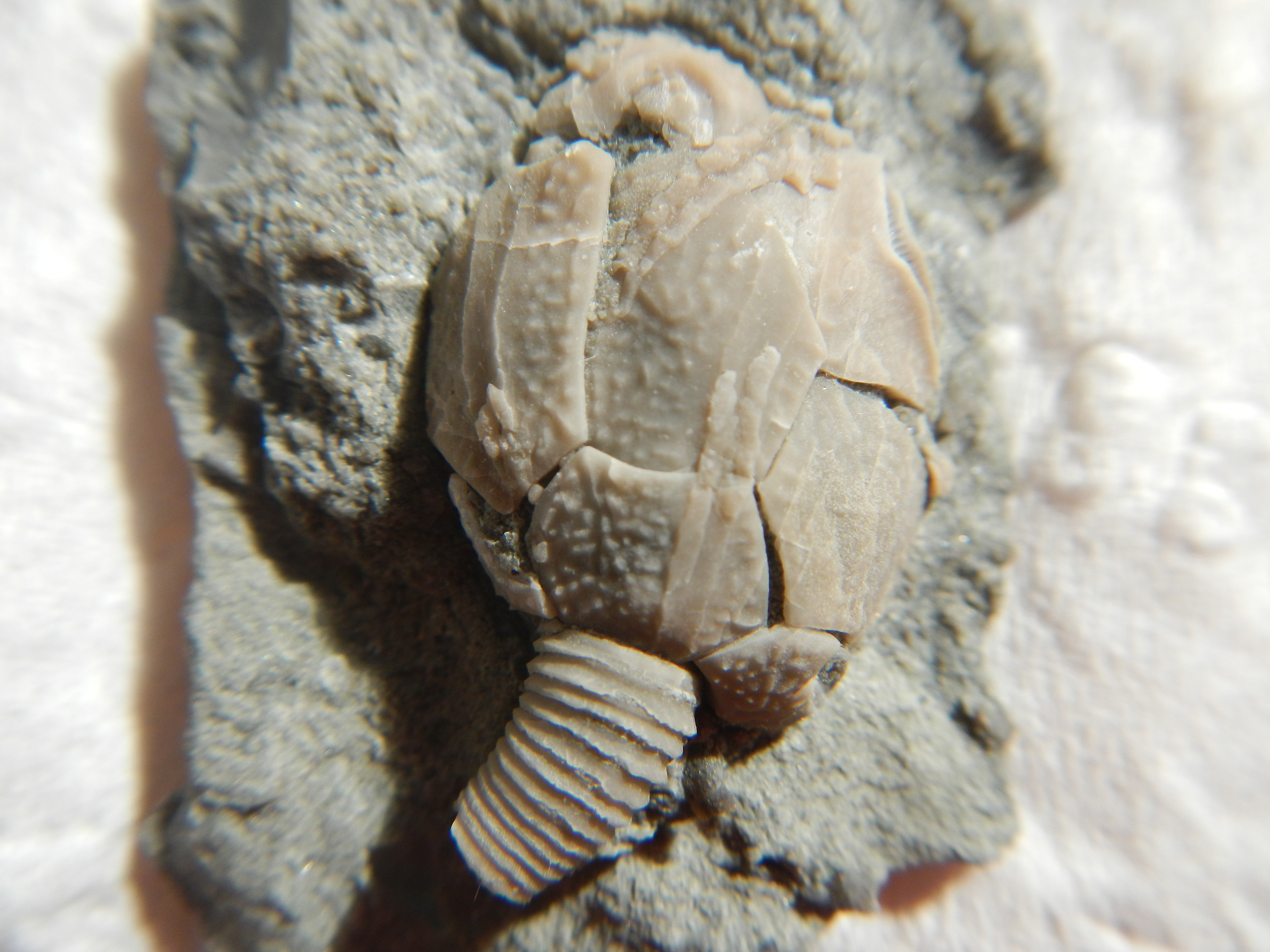
Three theca with and without columns are referenced to the following cystoids:
Sphaerocystoides ovatus (an Early Devonian form previously noted in the USA), Lepocrinites gebhardi (or L. manlius), both recovered from Early Devonian strata in the United States; and Lovéncystites, not previously reported in North America
Corals
Fragment of a colony of the tabulate coral Squameofavosites has been recovered, with several rugose coral sections suggesting Dubrovia?, Spongophylloides? and possibly Acanthophyllum. The latter had been reported by Oliver (1977) without description or illustration.
Crinoid Columnals
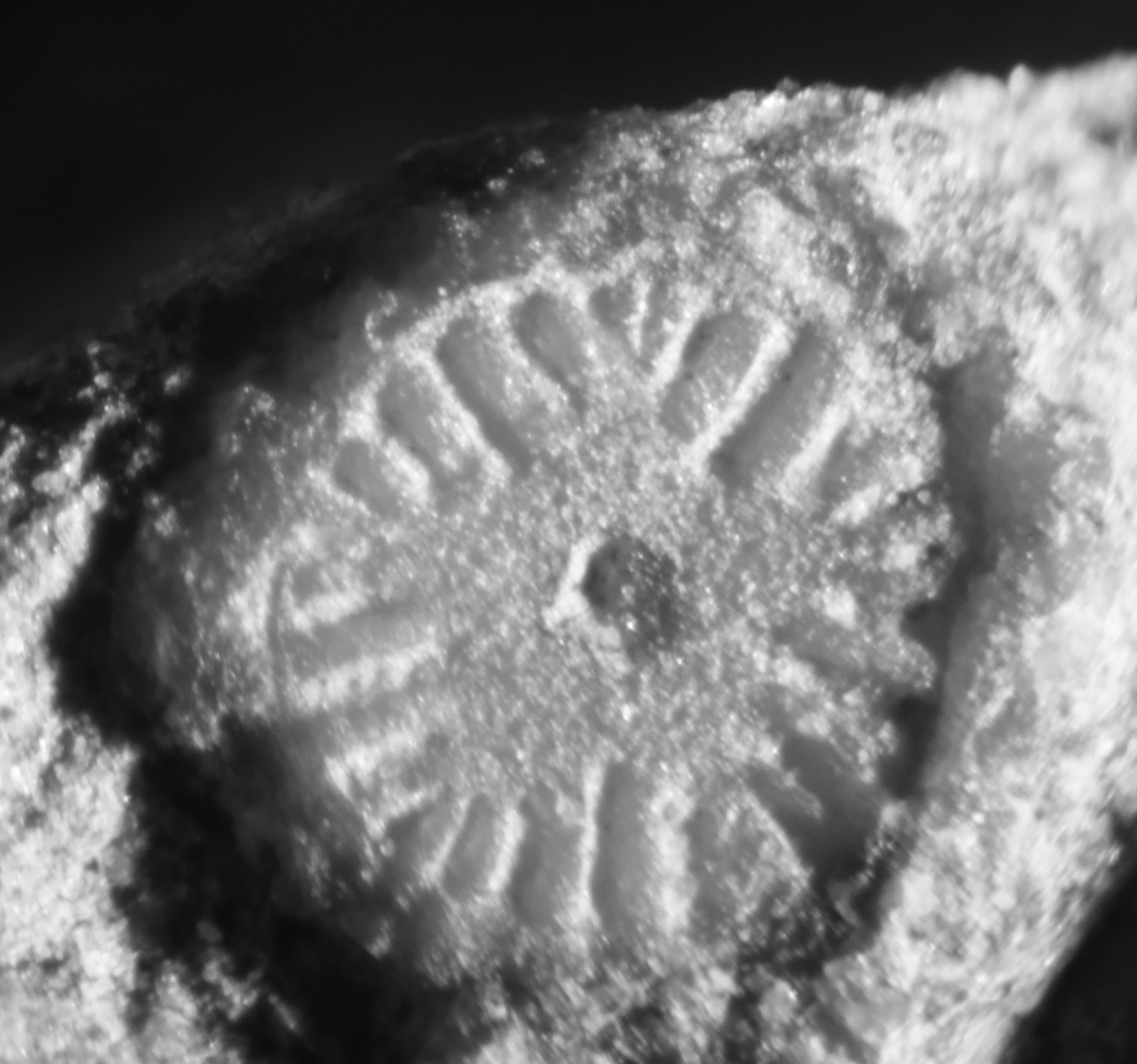
Crinoid columnals offer an alternate taxonomic framework to that characterized from cups and crowns. The illustrated facet is similar to Facetocrinus Stukalina, a genus found in late Silurian through Middle Devonian strata of Russia, eastern Europe, Germany, and France.
Bivalve
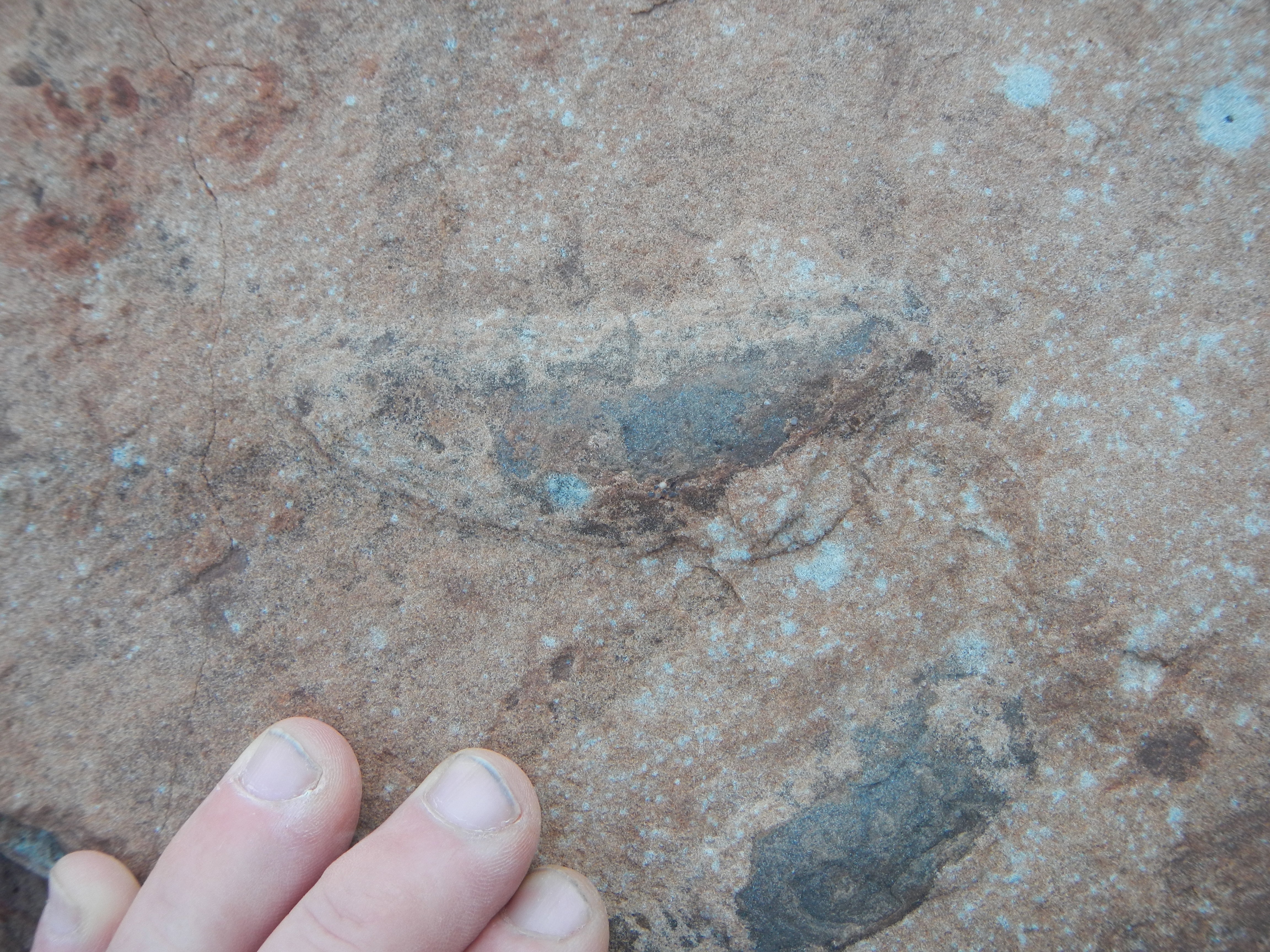
Brachiopods
Part of the formation contains a relatively rich abundance of spiriferid brachiopods, including Howellella species, and likely Cyrtina, Havlicekia and Nikiforovaena along with a large elongate terebratulid. Only a mold with some remnant (smooth) calcite shell is preserved of the latter brachiopod. Such large forms have been typically appeared only in the later Early Devonian (Pragian).
Trace Fossils
The formation contains a rich diversity of trace fossils but there has been study associated with the ichnofossils. Previous work described Diplichinites trackways (Wright et al. 1995: Canadian Journal of Earth Sciences 32, 304-313). In an unprepared collection reposited in The Rooms, St. John's (NL) representing two fossil collections in 1993 and 1998, another type of trackway had been recovered. This is a different form illustrated here. Two parallel, possibly zig-zag tracks of very shallow, small (~2 mm) imprints, the best defined (arrow) showing a central depression and bounding narrow extensions in line with the track.
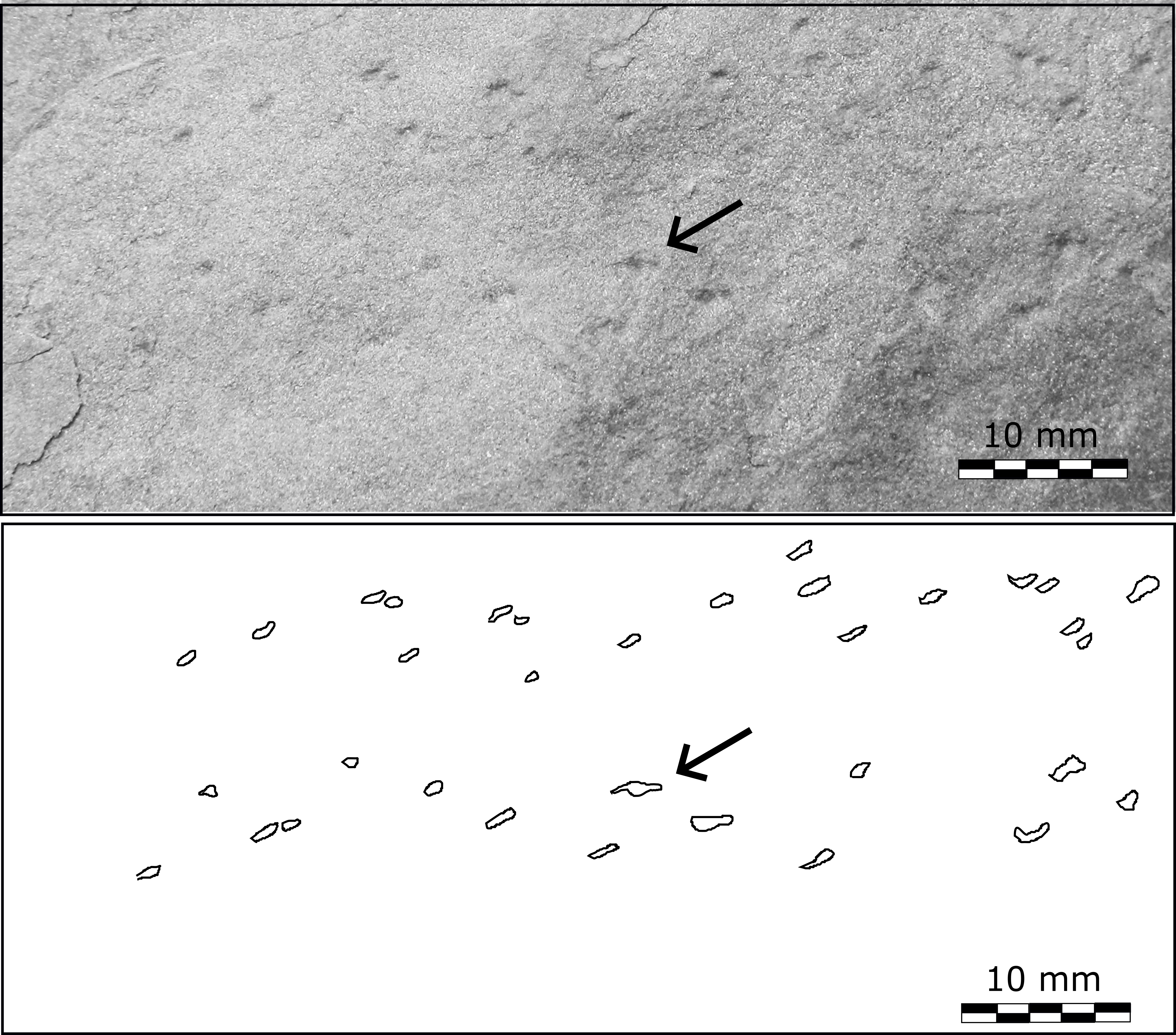
A second type of imprint was recovered on rock slabs from the beachface: ophiuroid arm imprints and shallow, partially facetted burrows. These have been described in a paper recently published:
Dix, 2025: Lower Devonian ophiuroid ichnofossils (Biformites insolitus and facetted burrows) in a stressed coastal paleoenvironment: Clam Bank Formation, northern Canadian Appalachians. Journal of Paleontology.
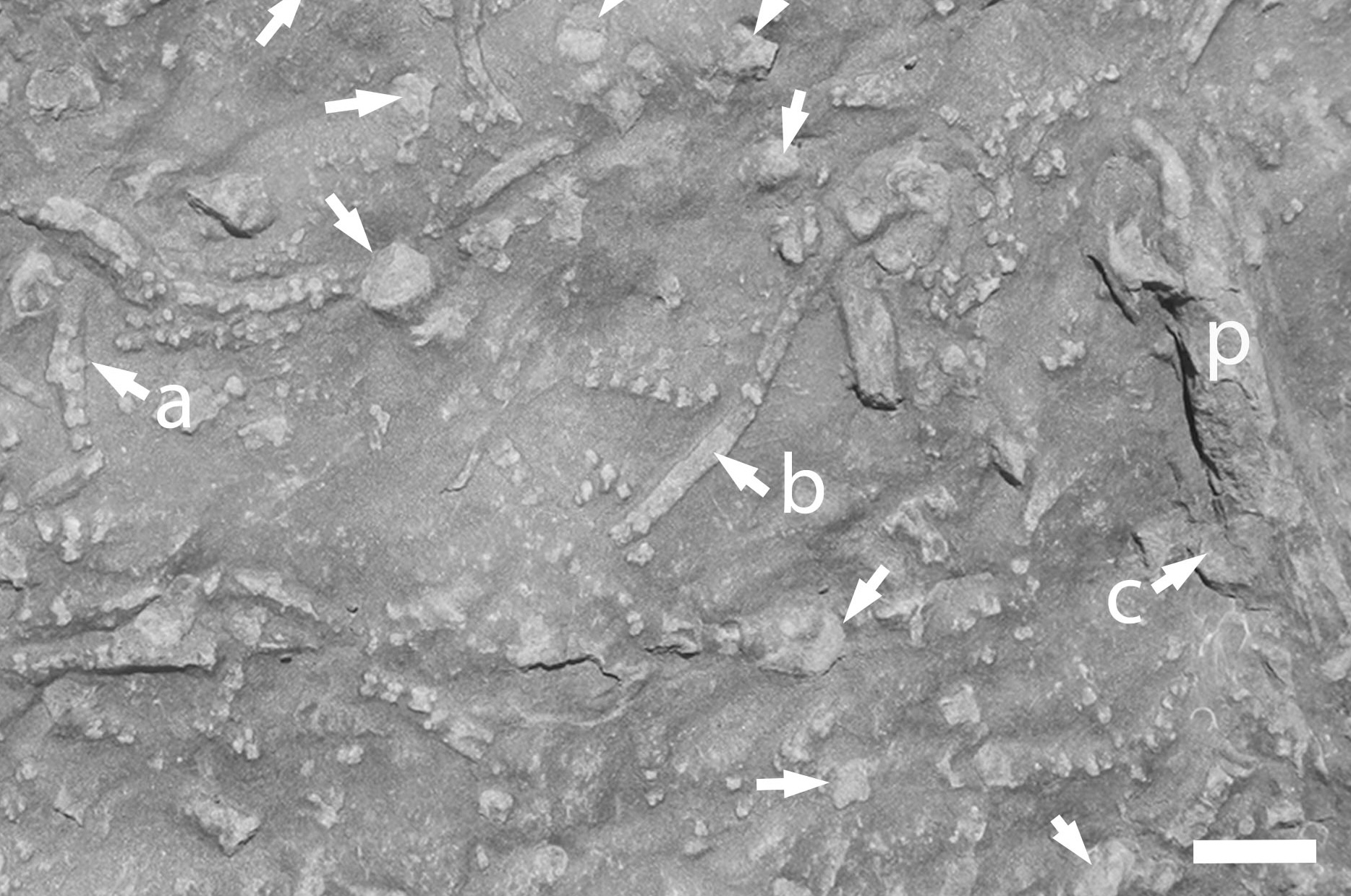
Legend: a, overlapping imprints of arms; b, lateral variation in detail from pustular (bottom left) to smooth (at arrow); c, burrow cutting through the ichnofossil Palaeophycus (p); other arrows, partially facetted burrows.
